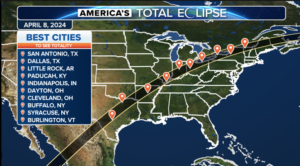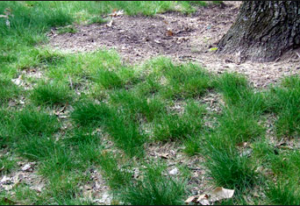Total Solar Eclipse, Total Shade
About Total Solar Eclipse, Total Shade
The anticipation builds as the world braces itself for a celestial phenomenon—the solar eclipse, a rare cosmic ballet where the moon gracefully aligns with the sun, momentarily dimming its radiant light. It’s a spectacle that captivates hearts and minds, reminding us of the delicate dance between light and shadow that permeates our universe.
While the eclipse itself is just a momentary (well, 2-3 minute) blip of shade on an otherwise sunny day and would therefore have no effect on your lawn (or any other plant life for that matter), it’s worth thinking through the effects of a more permanent cause of shade, namely trees, buildings, or other visual obstacles.

The Tapestry of Shade
Imagine a patchwork quilt spread across your lawn, woven from the dappled sunlight filtering through the branches of trees or the sheltering embrace of a pergola. These patches of shade, varying in size and intensity, create microclimates within your outdoor space, each with its own unique characteristics.
In some areas, shade provides respite from the scorching rays of the sun, offering cool havens where delicate plants can flourish without fear of wilting under its relentless gaze. In others, it fosters a lush undergrowth of mosses and ferns, adding layers of texture and richness to the landscape.
The Impact on Your Lawn
But what about your lawn, that expanse of greenery that serves as the backdrop to your outdoor adventures? How does shade influence its health and vitality?
The answer lies in understanding the delicate balance between light and shade that your lawn requires to thrive. While grass is a resilient plant, capable of adapting to a range of conditions, it too has its limits. Too much shade can stifle its growth, leading to thinning patches and a lackluster appearance.

On the other hand, strategically positioning shade can greatly benefit your lawn, particularly in areas with intense, relentless sunlight. By providing relief from excessive heat and reducing moisture loss through evaporation, shade helps to keep your grass happy and hydrated, even during the dog days of summer.
Finding the Balance
So how do you strike the right balance between light and shade in your outdoor oasis? It begins with careful observation and thoughtful planning.
Take note of how the sun moves across your yard throughout the day, casting shadows that shift and evolve with the changing seasons. Identify areas where shade is abundant and where it is lacking, and consider how you might leverage these natural patterns to create a harmonious environment for your lawn and garden.
In areas where shade is scarce, consider planting trees or installing structures like pergolas or arbors to provide relief from the sun’s harsh rays. Conversely, if your lawn is struggling under the weight of too much shade, explore alternatives like shade-tolerant grass varieties or ground covers that can thrive in low-light conditions.
Embracing the Beauty of Light and Shadow
As we marvel at the celestial spectacle unfolding above us, let us also take a moment to appreciate the beauty of light and shadow in our own backyard. Whether it’s the gentle dappling of sunlight through the leaves of a tree or the cool embrace of a shaded alcove, shade adds depth and dimension to our outdoor spaces, inviting us to pause, reflect, and reconnect with the natural world.
So as you prepare to witness the wonder of the solar eclipse, take a moment to consider the everyday marvels of shade and its impact on the vibrant tapestry of life that surrounds us. For in the delicate dance between light and shadow, we find the true essence of beauty and balance in the world around us.
